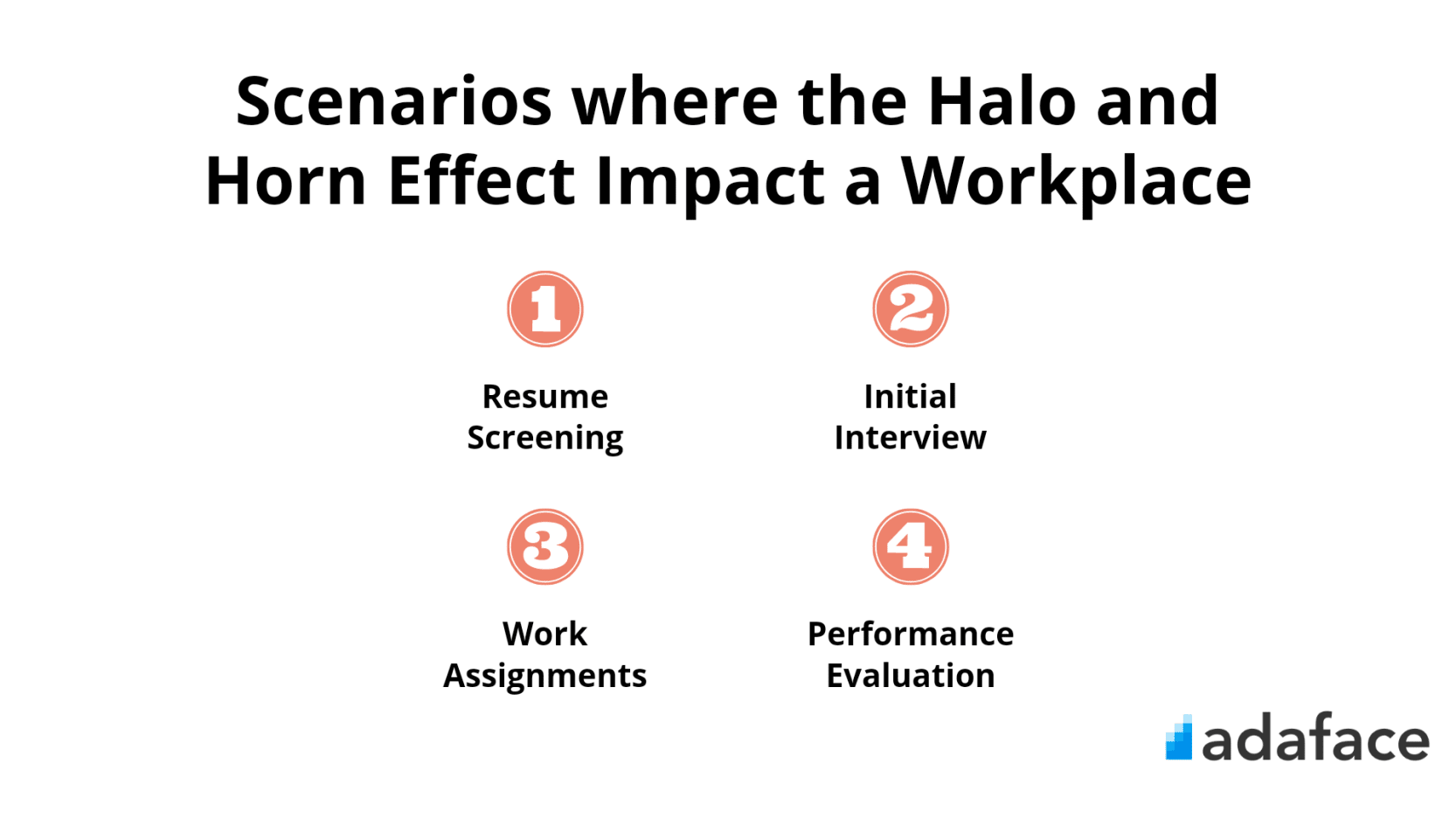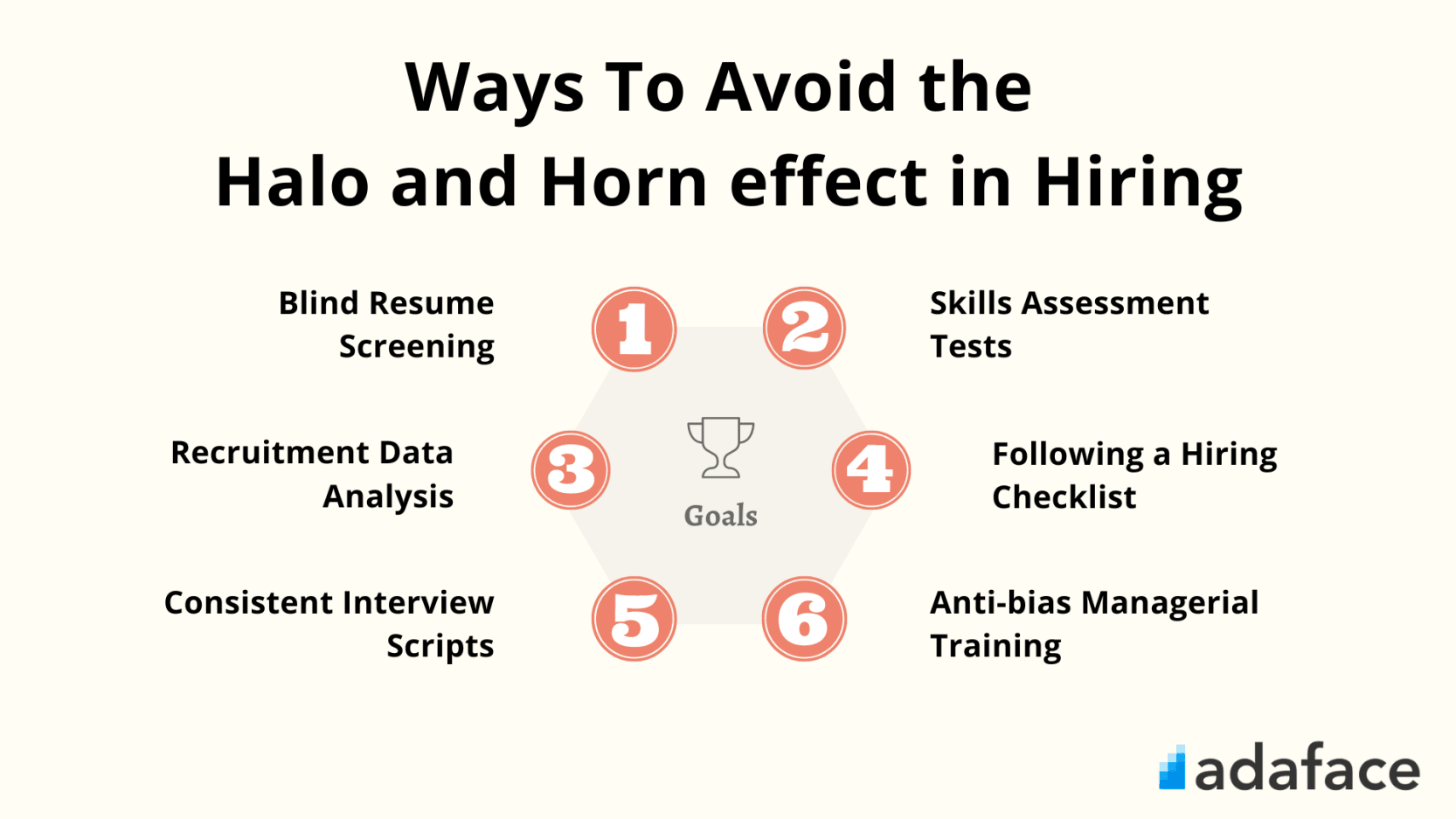
Picture this: You are recruiting for a software job, and two candidates come in back to back. One knows their subject matter well and has a great resume, but comes off as a little timid and has an unremarkable face.
The other has less of a resume but is charming in manners and happens to have grown up on the same street you did. Do you feel yourself warming more to the second candidate? If so, it is okay - you are not alone.
Even when we do not mean to, our personal biases often end up coming in the way. Perhaps we find someone physically attractive, or maybe we are instinctively turned off by someone’s tattoos. As a result, we end up accepting or rejecting candidates for reasons that have nothing to do with their on-the-job abilities.
It is essential to recognize these biases within us and actively combat them during the candidate selection process. Here, we take a closer look at the infamous ‘halo and horn’ effect:
So, what is the halo and horn effect?
The halo and horn effect is a cognitive bias in which a single trait, good or bad, influences our entire judgment of another person during a first impression. It most commonly occurs with regard to physical characteristics, such as the color of someone’s eyes or the cut of their outfit.
The effect often crops up in our personal lives, especially regarding things like first dates, where initial impressions matter. However, when relied on too much, the halo and horn effect can negatively impact our ability to treat people objectively.
The science behind the halo and horn effect in hiring
As humans, we are subject to 188 different cognitive biases impacting our interpretation of the world around us. Think of a cognitive bias as a story you make up to explain or justify having thought to yourself instantly - without realizing you have done it! Look - cognitive biases are helpful as they result from the brain having processed the information efficiently.

However, it is hard to pinpoint exactly where or to what degree a cognitive bias influences the hiring decision. It could happen at any stage of the recruitment process without the recruiter even being conscious of it. As a result, the halo and horn effect could skew the company’s recruitment outcomes in insidious ways.
Halo and horn effect examples in hiring
In this context, the halo effect was first noted in 1920 by psychologist Edward Thorndike. He observed that military leaders tended to assume that conventionally attractive recruits were most likely to be competent.
Even today, hiring managers often form positive impressions of candidates based on physical appearances, such as by equating a gorgeous face with kindness or a tall height with good leadership abilities.
The similarity bias is related to the halo effect, where recruiters feel drawn toward candidates with the same experiences and tastes. On the opposite end is the horn effect, also known as the reverse halo effect.
Many hiring managers end up forming a negative impression of candidates based on physical traits they do not like, such as assuming a blonde female is less intelligent, or a scruffily-dressed person is irresponsible.
Yes, such perceptions are often rooted in harmful stereotypes and social conditioning and can lead to unfair treatment of candidates who fall short. In the workplace, the halo effect is most likely to benefit people from privileged backgrounds, while the horn effect mostly impacts people from marginalized backgrounds.
Discrimination based on background or ethnicity is common, with many managers assuming that people who grew up in specific ‘rough’ neighborhoods have less potential or are less reliable. A 1979 study also observed that overweight people were rated more negatively when it came to job performance and tended to be less preferred by hiring managers.
Another significant horn effect relates to the ‘bamboo ceiling,’ referring to the impeded progress and reduced opportunities for workers of Asian descent owing to stereotypes about them being mild-mannered and meek (and thus poor leaders).
Scenarios where the halo and horn effect impact a workplace
The halo and horn effect can influence outcomes at both the recruitment and workplace stages. Let us have a look:
1. Resume screening
Here is the truth - recruitment is not a piece of cake! With up to thousands of applicants for each job and limited time on hand to fill up the post, recruiters can rarely spend too much time gathering data and making reasoned judgments about each applicant.
Thus, it becomes easy to fall back on cognitive biases and use them to make a quick decision about whether to hire or not.
2. Initial interview
At the first interview stage, interactions with the candidate may be influenced by the bias that the hiring manager holds for or against them. The halo effect could cause the manager to act friendlier, ask easier questions, or overlook red flags like a lack of relevant job experience. Similarly, the horn effect could cause them to treat the candidate with more suspicion or ask unnecessarily hard questions.
3. Work assignments
When an employee does well in one task, they may be recognized and rewarded with another task of equal or higher importance. This is how employees grow in their roles. This is also where the halo effect enters the picture.
For instance, if an employee generates a detailed report on complex business data analysis, that does not mean they should be ‘rewarded’ with the task of giving a formal representation at a high-end seminar.

Speaking of the horn effect, if an employee performs poorly on one task, they should not be denied opportunities to prove their worth. You do not need to stall their progress.
4. Performance evaluation
At the workplace stage, hiring managers influenced by the halo effect could treat employees more favorably, to the extent of treating their mistakes more leniently or giving them non-objective performance ratings. On the other hand, the horn effect could lead to managers coming down harder on certain employees or grading them more toughly.
Regarding growth and leadership opportunities, talented candidates could be passed over in favor of people whom the hiring manager likes better. As is evident, the halo and horn effect could significantly impact organizational performance by overlooking true ability and hiring and promoting the wrong people.
Workplace resentment will also go up, leading to personal and departmental clashes as well as poor mental health. In addition, given that the horn effect tends to disproportionately impact those from marginalized backgrounds, diversity, and inclusion end up suffering.
How to avoid the halo and horn effect in hiring
Knowing the types of bias you are most likely to be affected by can help you take reasonable steps to minimize it, including training employees on the effect of bias. Pinpointing or measuring cognitive biases can be hard at first but not impossible.

There are several ways your company can promote objective recruitment practices and reduce stereotyping and generalizations to a great extent:
1. Blind resume screening
An excellent way to remove bias at the initial stage is by eliminating details such as name, age, and address from the resume. Blind resume screening helps you retain applicants who might be discriminated against for their background or ethnicity.
2. Skills assessment tests
Cognitive biases often come into play when recruiters are short on time and need to make faster decisions. A more efficient and objective way to filter out candidates is by using skills assessment tests before the interview stage.
These can be done from the candidate’s home, are completely objective, and focus solely on job-relevant skills like coding or copywriting. That way, recruiters have more control over the input and can thus be sure the results are reliable too.
They can devote their attention to those most suited for the job. Fortunately, Adaface can help identify highly skilled and qualified individuals who may otherwise get overlooked due to the lack of an educational document or some racial factor.
On our platform, you can conduct aptitude tests, job-specific tests, and psychometric tests to recruit candidates with the best job skills, personality traits, and cognitive abilities. Adaface enables companies to develop custom assessments to make the right hire quickly and easily.
3. Recruitment data analysis
Investing in a recruitment data strategy can help identify the stages at which cognitive biases are most likely to kick in. If you see marginalized groups being excluded most at the telephonic interview stage, you can focus on ways to make the selection process more inclusive. Moving away from traditional screening and interviewing by incorporating blind applicant resumes and pre-employment assessments can help significantly reduce the halo and horn effect in hiring.
4. Follow a hiring checklist
Please make sure your screening and testing processes are rigorous, particularly when it comes to KPIs. Conduct thorough background checks on potential employees to ensure you get the right person for the job and not who you think will be a good fit for the company.
5. Consistent interview scripts
Regardless of the job you are interviewing for, have a consistent set of questions and a rating system to help evaluate each candidate. This avoids steering the interview toward questions about background and personal lives and keeps the focus on actual job requirements.
6. Anti-bias managerial training
No one likes to admit they are biased, but hosting periodic anti-bias coaching allows managers to investigate their biases and better spot their triggers. For instance, there could be targeted training on the types of questions not to ask (such as those related to a candidate’s social or ethnic background) or collective introspection on what makes managers feel ‘warmer’ about certain candidates than others.
7. Multi-member interview panels
With just one hiring manager, biases are likely to kick in at some point. Having three or more members allows individual perceptions to cancel each other out and enables a fair collective judgment on whom to hire.
In addition, conduct several interviews before hiring a person - a preliminary one, a full panel interview, and even job simulations where the person is asked to do the actual job with the hiring team for a few days.
Over to you
In summary, the halo and horn effect is a common human bias that may be acceptable for personal interactions but should be addressed in the workplace. By keeping criteria as objective as possible and bringing in multiple opinions when selecting someone, your company can keep the workplace bias-free and ensure that the best people - regardless of appearance, background, or other personal traits - get the best opportunities.

Asavari is an EiR at Adaface. She has made it her mission to help recruiters deploy candidate-friendly skill tests instead of trick-question based tests. When taking a break, she obsesses over art.
Spending too much time screening candidates?
We make it easy for you to find the best candidates in your pipeline-
with a 40 min skills test.


